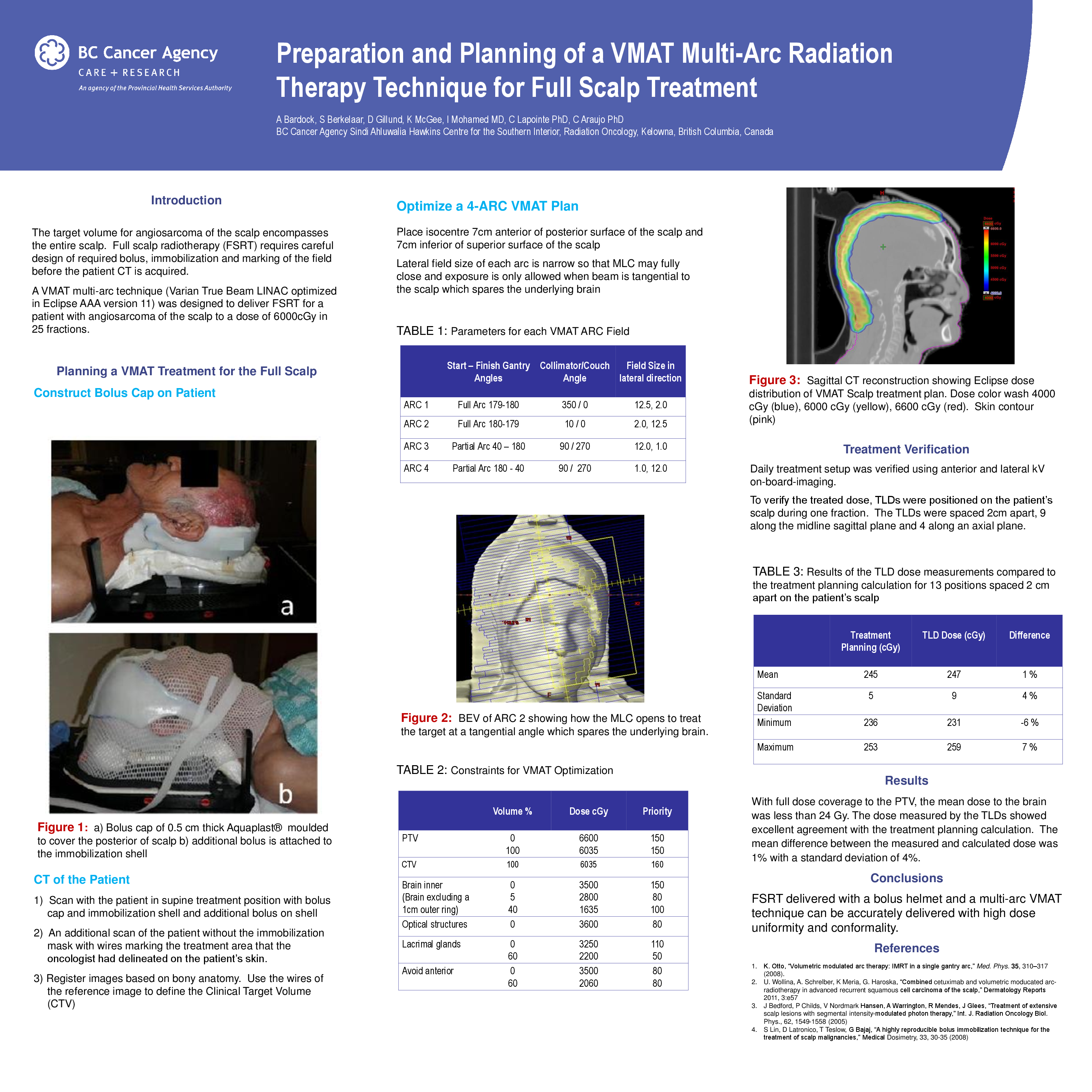Abstract
Radiation therapy of an entire scalp requires careful planning of required bolus, immobilization and marking of the field before the patient CT is acquired. A VMAT arc technique was designed to treat the full scalp for a patient with angiosarcoma of the scalp to a dose of 6000cGy in 25 fractions. A 0.5cm thick custom bolus helmet was fabricated from layers of … with the patient in the sitting position. With the bolus helmet in place the patient was then positioned supine on a H&N immobilization board. A custom vaclock positioned on a standard headrest was used to stabilizing the patient. A thermarest immobilization mask was formed and additional bolus to cover the remaining treatment area was attached to the mask.
A CT scan of the entire head with the patient in the supine treatment position was acquired. An additional scan of the patient positioned only on the custom head rest was acquired with wires marking the treatment area that the RO had delineated on the patient’s skin. This scan was registered to the first and used to define the treatment CTV.
A VMAT plan to be treated on a Varian True Beam LINAC was optimized in Eclipse using the photon dose AAA calculation version 11. Two full arcs with couch at 0° and collimator at +/- 10° where used along with two partial arcs with couch at 270° and collimator at 90°. The treatment was optimized to cover the skin, and a PTV margin, while sparing the underlying brain and limiting the dose to the optic apparatus and lacrimal glands. The dose to the brain was limited so that V20Gy, V30Gy and V40Gy were 710, 390 and 193 cm3 respectively. The mean dose to the brain was 2385 cGy.
Daily treatment setup was positioned using anterior and lateral kV on-board-imaging. TLDs where positioned on the patient’s scalp to verify the dose treated for one fraction. The TLDs were spaced 2cm apart, 9 along the midline sagittal plane, and 4 along an axial plane. The dose measured by the TLDs was compared to the treatment planning calculation which showed an excellent agreement. The mean difference between the measured and calculated dose was 1% with a standard deviation of 4%.





